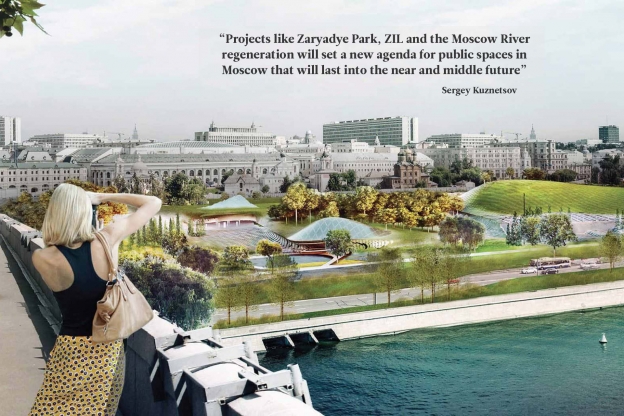Capital ideas: interviews from the Moscow Urban Forum

In December, the Moscow Urban Forum brought architects and urbanists from around the world together with representatives of the Moscow City government to discuss the city’s development. The Calvert Journal caught up with some of them during the four-day jamboree.
 Sergey Kuznetsov
Sergey Kuznetsov
Moscow’s Chief Architect
— What has characterised Moscow’s architectural development in the last few years?
— Firstly, the launch of a competition programme. We’ve had several quite big architectural competitions here, from Zaryadye Park to the Moscow River competition. In the case of the latter, we’ve had the first Russian company winning one of these competitions. The competition process has involved comprehensive workshops between different expert architects and world experts in ecology, social conscience and so on. This is an absolutely new feature for Moscow’s architecture and a sign of its development.
Secondly, there’s been a new level of collaboration on city planning. The fact that Moscow is consulting international experts like Jan Gehl [Danish urbanism guru] is proof of a new level of architectural dialogue going on.
— How effective are international competitions as a method of urban planning in the long term?
— The interesting feature of the competitions is that it’s not necessary to realise the exact idea that comes from the competition. They’re like an ideas bank. It allows you to analyse the problem in a very wide and deep way.
— The identity of Moscow is miscellaneous, as it is composed of many different kinds of architecture. The Kremlin is built in a very local, Russian style, but made by Italians. Then you have a circle around the Kremlin made between the 17th and 19th centuries. This is made by German, French and British architects, as well as some Russian — so it’s a very strong reflection of European architecture. Then there is the Russian avant-garde — a very short but significant period — followed by the Stalinist period — very strong and imposing, assembled from a new language of architecture, a new ideology, a new message to society, when Moscow had become the new capital of a new country. After this was a huge, energetic expansion of Moscow with low-quality architecture — mass-produced Khrushchevkas — this is also part of our identity, but perhaps not one that we want to take with us into the future.
— Why would you want to preserve a great ideological statement to Stalinism like VDNKh?
— For me, the architectural identity of the Stalinist period is not the same thing as the ideology associated with that period. Of course, in that period, the architecture was the medium for conveying the new power and ideology, but now we understand that Stalinist architecture is an absolutely necessary part of our heritage. It has a ceremonial function in projecting Moscow as a capital. From Ivan the Terrible to Peter the Great in St Petersburg, this has always been the case. Our architecture is part of our story and we need to preserve it.
— I understand you want to separate architecture from ideology, but from a western perspective, when we see that VDNKh is being revamped, given recent events in Donbass and Crimea, and the sense of Russian expansionism that goes with it, can you see how this VDNKh project might be seen as an expression of a new imperialism?
— The basic ideology of this development is for it to be a scientific place and an interesting public space with entertainment features. The development is very peaceful and useful for society, and has nothing to do with imperialistic expansion and other such unpleasant things. I think we just need time to prove it.
— What should define 21st-century architecture in Moscow?
— Projects underway now like Zaryadye Park, ZIL and the Moscow River regeneration. They will set a new agenda for public spaces that will last into the near and middle future.
Full original article
- Tags:
- Urban Design




